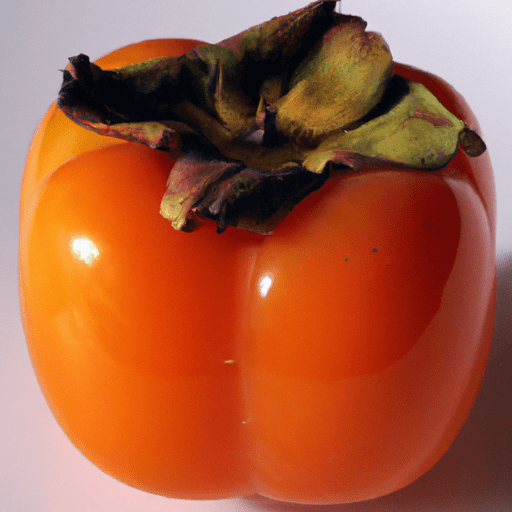The Flavorsome and Versatile Kaki: A Fruit Worth Exploring
Kaki, also known as Persimmon, is a deliciously sweet and versatile fruit that often does not get the recognition it deserves. With its unique flavor and numerous culinary possibilities, kaki can bring a delightful twist to both sweet and savory dishes. In this article, we will explore the taste profile, culinary uses, nutritional value, and intriguing history of this remarkable fruit.
A Taste Unparalleled
Kaki boasts a sweet and delicate flavor that is often described as a mix of apricot, mango, and honey. Its texture can vary, from firm and crisp when not fully ripe to lusciously soft and jelly-like when fully ripe. The fruit’s vibrant orange color is visually appealing and adds a burst of sunshine to any dish it graces.
Versatile in the Kitchen
The culinary potential of kaki is immense, making it an exciting ingredient to experiment with. Here are some popular ways to incorporate this delightful fruit into your cooking:
1. Fresh and Juicy
Enjoy kaki as nature intended, straight from the tree! Slice it up and savor it on its own, or add it to fruit salads for an extra burst of sweetness. Its natural crispness and refreshing sweetness make it an excellent addition to any dessert platter.
2. Baked Delights
Kaki’s natural sweetness and soft texture make it a great addition to baked goods. Toss some diced kaki into muffin or cake batter for a delightful twist. The fruit’s pulpy consistency creates a moist and flavorful crumb, perfect for sweet treats.
3. Exquisite Preserves
Harness the flavor of kaki by making delectable jams, jellies, or compotes. The naturally high pectin content of the fruit ensures a satisfyingly thick and flavorful preserve, ideal for spreading on toast or pairing with cheese.
4. Savory Sensations
Kaki is not limited to sweet creations; it shines in savory dishes too. Add slices of kaki to salads or use them as a topping on pizzas or flatbreads for a burst of sweetness. The fruit’s delicate flavor pairs well with various cheeses, cured meats, and even roasted vegetables.
Nutritional Value and Health Benefits
Not only is kaki a delicious fruit, but it also brings several health benefits to the table. Here are some reasons why you should consider incorporating kaki into your diet:
- High in vitamins A, C, and E, kaki supports a healthy immune system and promotes overall well-being.
- Rich in dietary fiber, kaki aids in digestion and helps maintain a healthy weight.
- Contains natural sugars, making it a healthier alternative to satisfy your sweet tooth compared to processed desserts.
- Packed with antioxidants, kaki helps to combat free radicals and reduce the risk of chronic diseases.
From Ancient Origins to Modern Delights
Kaki has a long and fascinating history. The fruit originated in China, where it has been cultivated for over 2000 years. From there, it gradually spread to Japan, Korea, and other parts of the world.
In Japan, kaki holds cultural significance and is associated with autumn. The Japanese often enjoy the fruit in its various forms during this season, celebrating its vibrant color and distinctively sweet taste.
Conclusion
The remarkable flavor, culinary versatility, and nutritional benefits of kaki make it an outstanding fruit to explore in the kitchen. Whether you indulge in its juicy freshness, indulge your sweet tooth with baked goods, or incorporate it into savory delights, kaki adds a unique touch to any dish. So, next time you come across this exquisite fruit, grab it with excitement and embark on a flavor-filled adventure!
Facts about Kaki
Origin: Kaki, also known as persimmon, is a fruit that originated in China. It has been cultivated for over 1,000 years and is considered one of the oldest fruits in the world.
Common Uses: Kaki is commonly consumed as a fresh fruit. It is also used in various culinary preparations, such as desserts, salads, jams, and baked goods. It can be dried and used as a natural sweetener.
Nutritional Benefits: Kaki is a good source of vitamins A, C, and E. It also contains dietary fiber, potassium, and manganese. It is low in calories, fat, and sodium.
Unique Properties: There are two main types of kaki: astringent and non-astringent. Astringent persimmons are high in tannins, which give them a puckering sensation when not fully ripe. Non-astringent varieties can be eaten even when firm, as they lack the tannins that cause the astringency.
Historical Significance: Kaki has been used for medicinal purposes in traditional Chinese medicine for centuries. It is believed to have benefits for digestive health, blood circulation, and strengthening the immune system. The fruit has also played a role in cultural traditions and celebrations in various countries.




Use the share button below if you liked it.
It makes me smile, when I see it.